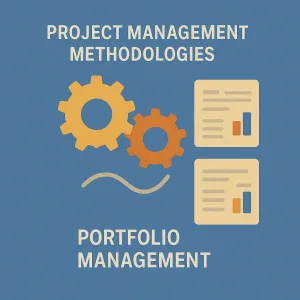In the realm of internal auditing, Information Technology General Controls (ITGC) play a pivotal role in ensuring the integrity and reliability of financial reporting. When considering SOX compliance, ITGC SOX controls are crucial for maintaining accurate financial data. ITGC refers to the policies, procedures, and activities that govern the management of IT systems and data. These controls are essential for safeguarding the accuracy, completeness, and confidentiality of financial information, which is critical for effective decision-making and compliance with regulatory requirements.
Importance of ITGC in the Audit Process
ITGC serves as the backbone of an organization’s internal control framework, particularly in the context of financial reporting. By establishing robust ITGC, organizations can mitigate risks associated with data breaches, unauthorized access, and system failures. These controls encompass various aspects, including:
- Access Control: Ensuring that only authorized personnel have access to sensitive financial data and systems.
- IT Security: Protecting systems from cyber threats and ensuring the integrity of data.
- Data Backup: Implementing measures to recover data in case of loss or corruption.
- Change Management: Managing changes to IT systems to prevent unauthorized alterations that could impact financial reporting.
The effectiveness of ITGC directly influences the overall audit process, as auditors rely on these controls to assess the reliability of financial information and the effectiveness of the internal control environment [1][5].
The Sarbanes-Oxley Act (SOX) and Its Impact on ITGC
The Sarbanes-Oxley Act (SOX), enacted in 2002, mandates that public companies establish and maintain effective internal controls over financial reporting. This legislation was introduced in response to high-profile corporate scandals and aims to enhance transparency and accountability in financial practices. SOX specifically emphasizes the importance of ITGC as part of the internal control framework, requiring organizations to implement controls that ensure the accuracy and reliability of financial reporting [3][9].
SOX compliance necessitates a thorough evaluation of ITGC, as these controls are integral to preventing and detecting fraud. Organizations must document their ITGC processes and demonstrate their effectiveness during audits. This requirement has led to increased scrutiny of IT systems and the implementation of innovative technologies to bolster ITGC, ensuring that they meet the stringent standards set forth by SOX [10][14].
Relationship Between ITGC and the Overall Internal Control Framework
ITGC is a critical component of the broader internal control framework within an organization. While financial controls focus on the accuracy of financial transactions and reporting, ITGC ensures that the underlying IT systems supporting these transactions are secure and reliable. The relationship between ITGC and financial controls is symbiotic; weaknesses in ITGC can lead to vulnerabilities in financial reporting, making it essential for organizations to maintain a comprehensive approach to internal controls [1][12].
Understanding the significance of ITGC and SOX controls is vital for IT auditors and technology leaders. By leveraging innovative tools and technologies, organizations can enhance their ITGC, thereby strengthening their overall internal control framework and ensuring compliance with regulatory requirements. This foundational knowledge sets the stage for exploring the various technological advancements that can further bolster ITGC in the internal audit process.
The Challenges Faced in Implementing ITGC SOX Controls
Implementing IT General Controls (ITGC) as part of Sarbanes-Oxley (SOX) compliance presents several challenges for organizations, particularly in today’s rapidly evolving technological landscape. Understanding these challenges is crucial for IT auditors and technology leaders aiming to enhance compliance and control measures. Here are some of the key obstacles organizations typically encounter:
Typical Compliance Challenges Under SOX
- Complex Regulatory Requirements: The Sarbanes-Oxley Act mandates that public companies establish and maintain effective internal controls over financial reporting. This includes ITGCs, which are essential for ensuring the accuracy and integrity of financial statements. Organizations often struggle to interpret and implement these complex regulatory requirements effectively [5][11].
- Resource Constraints: Many organizations face limitations in terms of personnel and budget, which can hinder their ability to develop and maintain robust ITGCs. This is particularly challenging for smaller companies that may lack the necessary resources to implement comprehensive compliance programs [3][6].
- Continuous Monitoring Needs: SOX compliance is not a one-time effort; it requires ongoing monitoring and adaptation to changes in technology and business processes. Organizations often find it difficult to establish a continuous monitoring system that can promptly identify and address compliance issues as they arise [1][2].
Complexities of IT Environments in Modern Organizations
- Diverse IT Landscapes: Modern organizations often operate in complex IT environments that include a mix of on-premises systems, cloud services, and third-party applications. This diversity can complicate the implementation of ITGCs, as organizations must ensure that controls are effective across all platforms and technologies [1][10].
- Rapid Technological Changes: The fast pace of technological advancement can outstrip an organization’s ability to adapt its ITGCs accordingly. New technologies may introduce unforeseen risks that existing controls are not equipped to handle, leading to potential compliance gaps [6].
- Integration Challenges: Integrating ITGCs with existing business processes and systems can be a significant hurdle. Organizations may struggle to align their IT controls with operational workflows, which can lead to inefficiencies and increased risk of non-compliance [3][12].
Limitations of Manual Processes in Ensuring Compliance
- Human Error: Manual processes are inherently prone to human error, which can compromise the effectiveness of ITGCs. Inconsistent application of controls and oversight can lead to significant compliance risks, particularly in high-stakes environments like financial reporting [13].
- Inefficiencies: Relying on manual processes can create bottlenecks in compliance efforts, making it difficult for organizations to respond swiftly to compliance requirements. This can hinder the overall effectiveness of ITGCs and increase the risk of non-compliance [14].
- Lack of Standardization: The absence of standardized methodologies for testing ITGCs can lead to inconsistencies in how controls are evaluated across different departments or business units. This lack of uniformity can complicate compliance efforts and make it challenging to demonstrate adherence to SOX requirements.
While the implementation of ITGC SOX controls is essential for compliance, organizations face numerous challenges that can impede their efforts. By recognizing these obstacles, IT auditors and technology leaders can better strategize and leverage innovative tools and technologies to enhance their compliance frameworks and ensure the integrity of financial reporting.
Innovative Tools for Enhancing ITGC SOX Controls
In the realm of internal audit, particularly concerning IT General Controls (ITGC) under the Sarbanes-Oxley Act (SOX), the integration of technology has become paramount. As organizations strive to ensure compliance and enhance the integrity of their financial reporting, innovative tools and technologies play a crucial role in bolstering ITGC. Here, we explore several key technological solutions that can significantly improve the effectiveness of ITGC SOX controls.
Automation Tools
Automation tools are revolutionizing the way organizations manage compliance processes. By automating access control requirements and change management processes, these tools help streamline operations, reduce manual errors, and enhance overall efficiency. For instance, organizations can implement automated access reviews, which not only save time but also minimize compliance risks associated with manual reviews that can be cumbersome and prone to errors. This shift towards automation allows IT auditors to focus on more strategic tasks rather than getting bogged down by repetitive manual processes, ultimately leading to a more robust compliance framework [3][4].
Governance, Risk Management, and Compliance (GRC) Software
GRC software is another innovative solution that can significantly enhance ITGC SOX controls. These platforms provide a comprehensive approach to managing governance, risk, and compliance activities within an organization. By centralizing data and processes, GRC software enables organizations to maintain a clear overview of their compliance status, identify potential risks, and implement necessary controls effectively. This holistic view is essential for IT auditors and technology leaders as it facilitates better decision-making and ensures that all aspects of compliance are addressed in a cohesive manner [6][12].
Cloud-Based Solutions
The adoption of cloud-based solutions for ITGC management offers numerous advantages. These solutions provide flexibility, scalability, and accessibility, allowing organizations to manage their ITGC processes from anywhere at any time. Cloud-based platforms often come equipped with advanced security features and regular updates, ensuring that organizations remain compliant with the latest regulations and standards. Additionally, the ability to leverage data analytics within cloud environments can enhance the accuracy and reliability of compliance efforts, reducing deficiencies and errors in financial statements [10].
The integration of innovative tools such as automation, GRC software, and cloud-based solutions is essential for enhancing ITGC SOX controls. These technologies not only streamline compliance processes but also empower IT auditors and technology leaders to maintain a robust and effective compliance framework, ultimately safeguarding the integrity of financial reporting. As organizations continue to navigate the complexities of SOX compliance, embracing these technological advancements will be key to achieving long-term success.
The Role of Data Analytics in ITGC SOX Compliance
In the realm of Internal Audit, particularly concerning IT General Controls (ITGC) under the Sarbanes-Oxley Act (SOX), the integration of data analytics has emerged as a transformative approach. By leveraging innovative tools and technologies, organizations can significantly enhance their compliance efforts and strengthen their control environments. Here are some key points on how data analytics plays a crucial role in ITGC SOX compliance:
- Identifying Trends and Anomalies: Data analytics enables auditors to sift through vast amounts of data to identify trends and anomalies that may indicate weaknesses in control effectiveness. By analyzing historical data, auditors can pinpoint patterns that suggest potential compliance risks or control failures. This proactive approach allows organizations to address issues before they escalate, ensuring a more robust compliance framework [2][10].
- Predictive Analytics for Proactive Compliance Management: Predictive analytics takes data analysis a step further by using statistical algorithms and machine learning techniques to forecast future outcomes based on historical data. This capability allows organizations to anticipate compliance challenges and implement corrective measures proactively. For instance, predictive models can assess the likelihood of control failures, enabling IT auditors to focus their efforts on high-risk areas and allocate resources more effectively [4][11].
- Data Visualization Tools for Enhanced Reporting and Monitoring: The use of data visualization tools is essential for translating complex data sets into understandable insights. Tools such as Tableau, Power BI, and QlikView allow auditors to create interactive dashboards that provide real-time monitoring of ITGC effectiveness. These visual representations not only enhance reporting but also facilitate better communication of compliance status to stakeholders, making it easier to identify areas needing attention [6][15].
The integration of data analytics into ITGC SOX compliance processes empowers organizations to enhance their internal controls significantly. By identifying trends, leveraging predictive analytics, and utilizing data visualization tools, IT auditors and technology leaders can foster a more proactive and effective compliance environment. This strategic approach not only strengthens compliance efforts but also contributes to the overall integrity and security of financial data management.
Artificial Intelligence and Machine Learning in ITGC
In the realm of Internal Audit, particularly concerning IT General Controls (ITGC) under the Sarbanes-Oxley Act (SOX), the integration of Artificial Intelligence (AI) and Machine Learning (ML) technologies is proving to be transformative. These advanced technologies not only enhance the efficiency of compliance processes but also significantly improve the effectiveness of controls.
Defining AI and ML in the Context of ITGC
- Artificial Intelligence (AI) refers to the simulation of human intelligence in machines programmed to think and learn. In the context of ITGC, AI can automate various compliance tasks, analyze large datasets, and provide insights that were previously unattainable through manual processes.
- Machine Learning (ML), a subset of AI, involves algorithms that enable systems to learn from data and improve their performance over time without being explicitly programmed. This capability is particularly relevant for identifying patterns and anomalies in financial data, which is crucial for maintaining robust ITGC.
The relevance of AI and ML to ITGC lies in their ability to enhance the accuracy and speed of compliance activities, thereby reducing the risk of errors and fraud in financial reporting. By automating routine tasks, these technologies allow auditors to focus on more strategic aspects of their work, such as risk assessment and control evaluation.
AI for Risk Assessment and Anomaly Detection
AI technologies are increasingly being utilized for risk assessment and anomaly detection within ITGC frameworks.
- Risk Assessment: AI can analyze historical data to identify potential risks and vulnerabilities in financial processes. By leveraging predictive analytics, organizations can proactively address areas of concern before they escalate into significant issues. This capability is essential for maintaining compliance with SOX requirements, as it allows for a more dynamic approach to risk management.
- Anomaly Detection: Machine learning algorithms excel at detecting irregularities in large datasets. For instance, AI can continuously monitor transactions and flag any that deviate from established patterns, enabling organizations to respond swiftly to potential fraud or compliance breaches. This real-time analysis is crucial for maintaining the integrity of financial reporting and ensuring adherence to SOX controls.
Implementing a Technology-Driven Approach to ITGC SOX Controls
In the evolving landscape of corporate governance and compliance, the integration of technology into IT General Controls (ITGC) under the Sarbanes-Oxley Act (SOX) is becoming increasingly vital. A technology-driven approach not only enhances the effectiveness of ITGC but also streamlines the auditing process, making it more efficient and less prone to human error. Here’s a roadmap for organizations looking to adopt innovative tools and technologies to bolster their ITGC SOX controls.
Steps for Integrating Innovative Tools into Existing ITGC Frameworks
- Assessment of Current ITGC Framework: Begin by conducting a thorough assessment of your existing ITGC framework to identify gaps and areas for improvement. This will help in determining which innovative tools can be integrated effectively.
- Selection of Appropriate Technologies: Choose technologies that align with your organization’s specific needs. This may include automation tools for data collection and reporting, advanced analytics for risk assessment, and cybersecurity solutions to protect sensitive information. For instance, automating SOX audits can significantly reduce the manual workload and improve accuracy in reporting [2][9].
- Pilot Testing: Implement a pilot program to test the selected tools in a controlled environment. This allows for the evaluation of their effectiveness and the identification of any potential issues before a full-scale rollout.
- Integration with Existing Systems: Ensure that the new tools can seamlessly integrate with your current IT systems. This may involve working with IT teams to ensure compatibility and to facilitate data sharing across platforms.
- Documentation and Compliance: Maintain comprehensive documentation of the integration process and ensure that all new tools comply with SOX requirements. This is crucial for demonstrating compliance during audits [11].
Importance of Training and Upskilling Staff in New Technologies
The successful implementation of a technology-driven approach hinges on the proficiency of the staff using these tools. Therefore, investing in training and upskilling is essential:
- Training Programs: Develop training programs that focus on the new technologies being implemented. This should include hands-on sessions, workshops, and access to online resources to ensure that staff are comfortable and competent in using the tools.
- Continuous Learning: Encourage a culture of continuous learning where employees are motivated to stay updated on the latest technologies and best practices in ITGC and SOX compliance. This can be achieved through regular training sessions and professional development opportunities [7].
- Cross-Functional Collaboration: Foster collaboration between IT auditors and technology teams to enhance understanding and utilization of the tools. This collaboration can lead to innovative solutions and improvements in the ITGC framework.
Need for Continuous Monitoring and Improvement of ITGC Controls
The dynamic nature of technology and regulatory requirements necessitates ongoing monitoring and improvement of ITGC controls:
- Regular Audits and Assessments: Conduct regular audits to assess the effectiveness of the ITGC controls and the technologies in use. This helps in identifying any weaknesses or areas that require enhancement [4][12].
- Feedback Mechanisms: Establish feedback mechanisms that allow staff to report issues or suggest improvements regarding the tools and processes. This can lead to valuable insights that drive continuous improvement.
- Adaptation to Changes: Stay agile and be prepared to adapt your ITGC framework and technologies in response to changes in regulations, business processes, or emerging technologies. This proactive approach ensures that your organization remains compliant and secure [6][13].
By adopting a technology-driven approach to ITGC SOX controls, organizations can enhance their compliance efforts, improve the accuracy of financial reporting, and ultimately foster a culture of accountability and transparency. Embracing innovative tools and continuous improvement will not only streamline the auditing process but also position organizations to better navigate the complexities of regulatory compliance in the digital age.
Conclusion: The Future of ITGC SOX Controls
As organizations navigate the complexities of compliance with the Sarbanes-Oxley Act (SOX), the significance of Information Technology General Controls (ITGC) cannot be overstated. These controls are essential for ensuring the accuracy and integrity of financial reporting, and their effectiveness is increasingly reliant on the integration of advanced technologies.
- Embracing Technology for Effective SOX Compliance: The landscape of ITGC is evolving, and embracing technology is crucial for organizations aiming to enhance their SOX compliance efforts. Innovative tools can streamline processes, improve accuracy, and reduce the manual burden associated with compliance tasks. By leveraging technology, organizations can ensure that their ITGC frameworks are robust and responsive to the dynamic regulatory environment [5][12].
- Staying Informed About Emerging Tools: IT auditors and technology leaders must remain vigilant and informed about the latest developments in compliance technology. Emerging tools, such as automation software and advanced analytics, offer significant potential to enhance the efficiency and effectiveness of ITGC audits. Continuous education and adaptation to these tools will empower professionals to better manage compliance risks and improve overall audit quality [9][11].
- Ongoing Improvements in Internal Auditing: The potential for ongoing improvements in internal auditing through innovative technologies is vast. As organizations adopt new solutions, they can expect to see enhancements in their control environments, leading to more effective risk management and compliance strategies. The integration of technology not only supports current compliance needs but also positions organizations to adapt to future challenges in the regulatory landscape [10][15].
In summary, the future of ITGC SOX controls is bright, driven by the ongoing evolution of technology. By embracing these advancements, IT auditors and technology leaders can significantly enhance their compliance frameworks, ensuring that they are not only meeting current requirements but are also prepared for the challenges that lie ahead.
Find out more about Shaun Stoltz https://www.shaunstoltz.com/about/
This post was written by an AI and reviewed/edited by a human.



